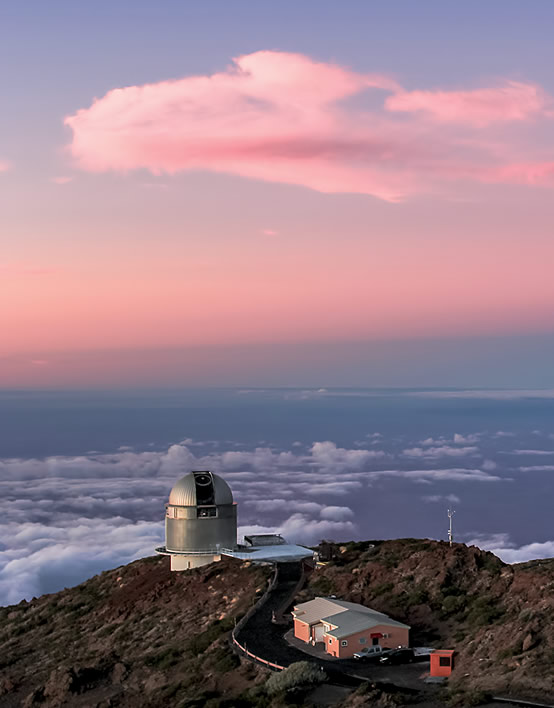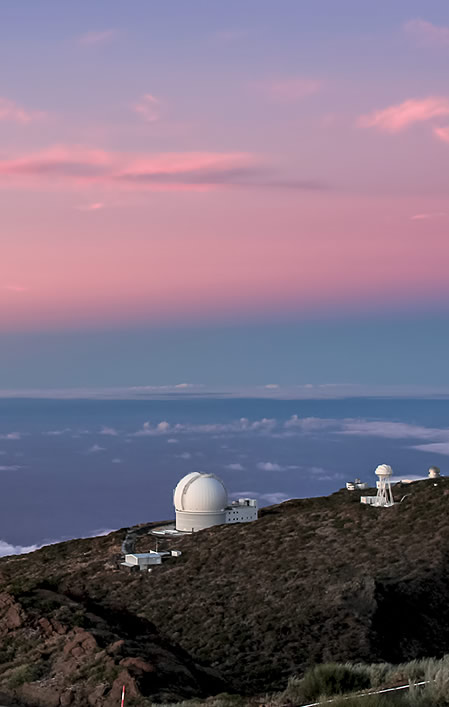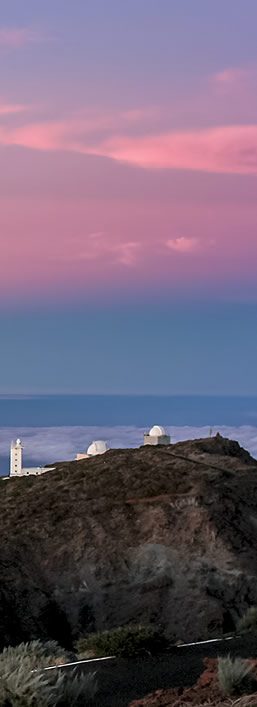"A few minutes after sunset the Earth shadow, a dark blue wedge rises upwards from the horizon. The wedge is the shadow of the Earth on the atmosphere. Immediately above it, where the evening air is still lit, glows a pink band called the anti-twilight arch, or �Belt of Venus�.
On the Earth below is a huge complex of telescopes, some of the world�s largest.
From left to right, the grey open dome is that of the Nordic Optical Telescope (NOT) a modern 2.6m optical/IR telescope. Next, the small white house is the home for the Automatic Transit Circle (ATC), an old meridian circle built by Grubb-Parsons in 1950 but completely refurbished and automated in the 1970's by the Copenhagen University Observatory (CUO).
To its right, the big white dome belongs to the great 4.2m William Herschel Telescope (WHT), the largest optical telescope of its kind in Europe and one of the world�s most scientifically productive.
Next, the small shape in the background near the first white tower is the Liverpool Telescope, a 2m robotic optical telescope. The telescope is especially to study variable phenomena.
The first white Tower is the 45cm Dutch Open Telescope (DOT), an innovative design for high-resolution imaging of the solar atmosphere. The distant small silver dome is the Mercator Telescope, a 1.2m quasi-robotic telescope whose niche is the monitoring of variable celestial phenomena with a large range of time-scales (pulsating stars, gravitational lenses, Gamma Ray Bursts, active Galactic Nuclei).
Immediately adjacent to the next tower (just in the picture) we can see the Swedish 1-m Solar Telescope (SST), the largest in Europe and number one in the world when it comes to high spatial resolution. The last two white domes belong to the 2.54m Isaac Newton Telescope (INT) and the 1m Jacobus Kapteyn Telescope (JKT)."
|








